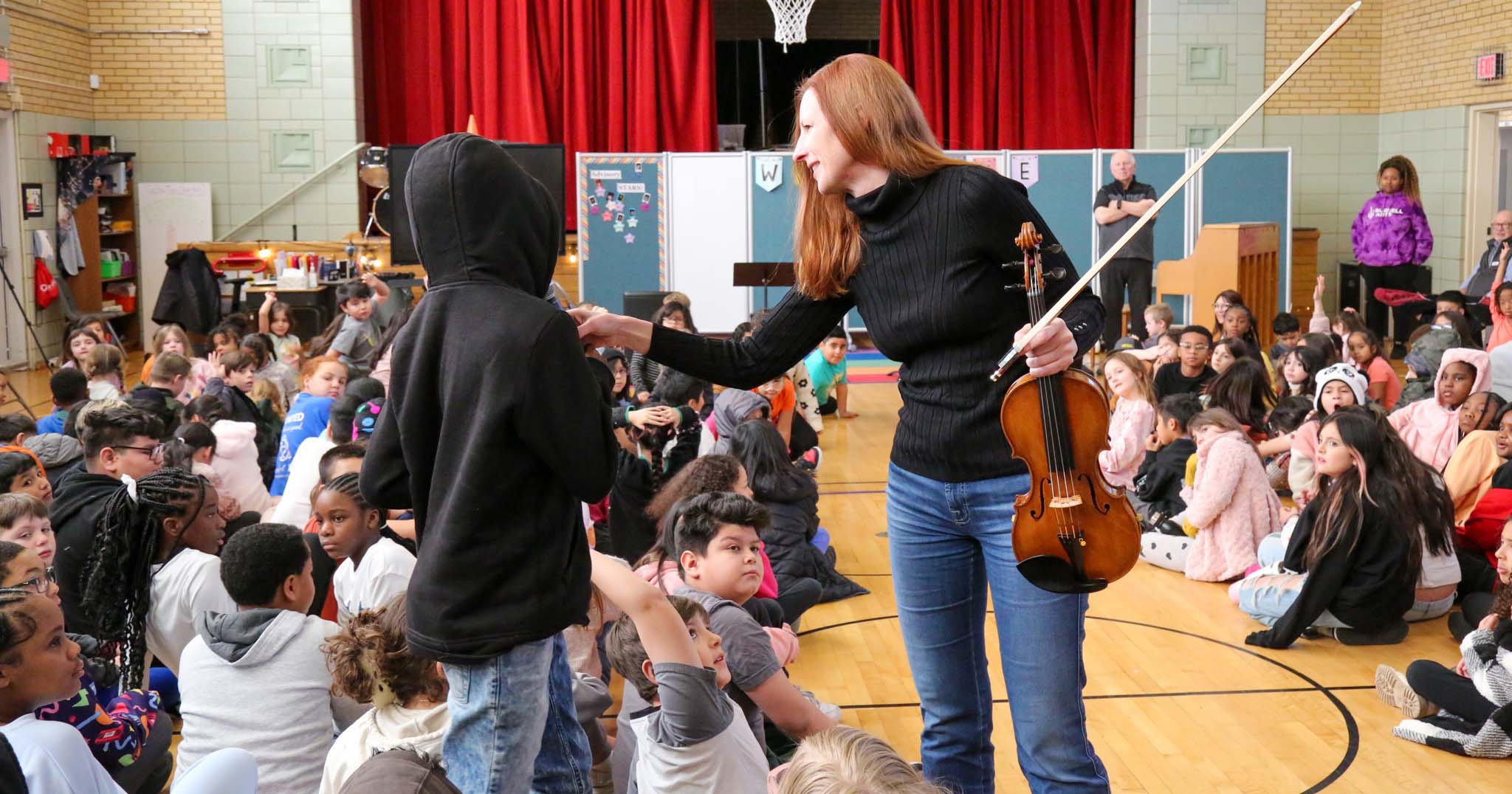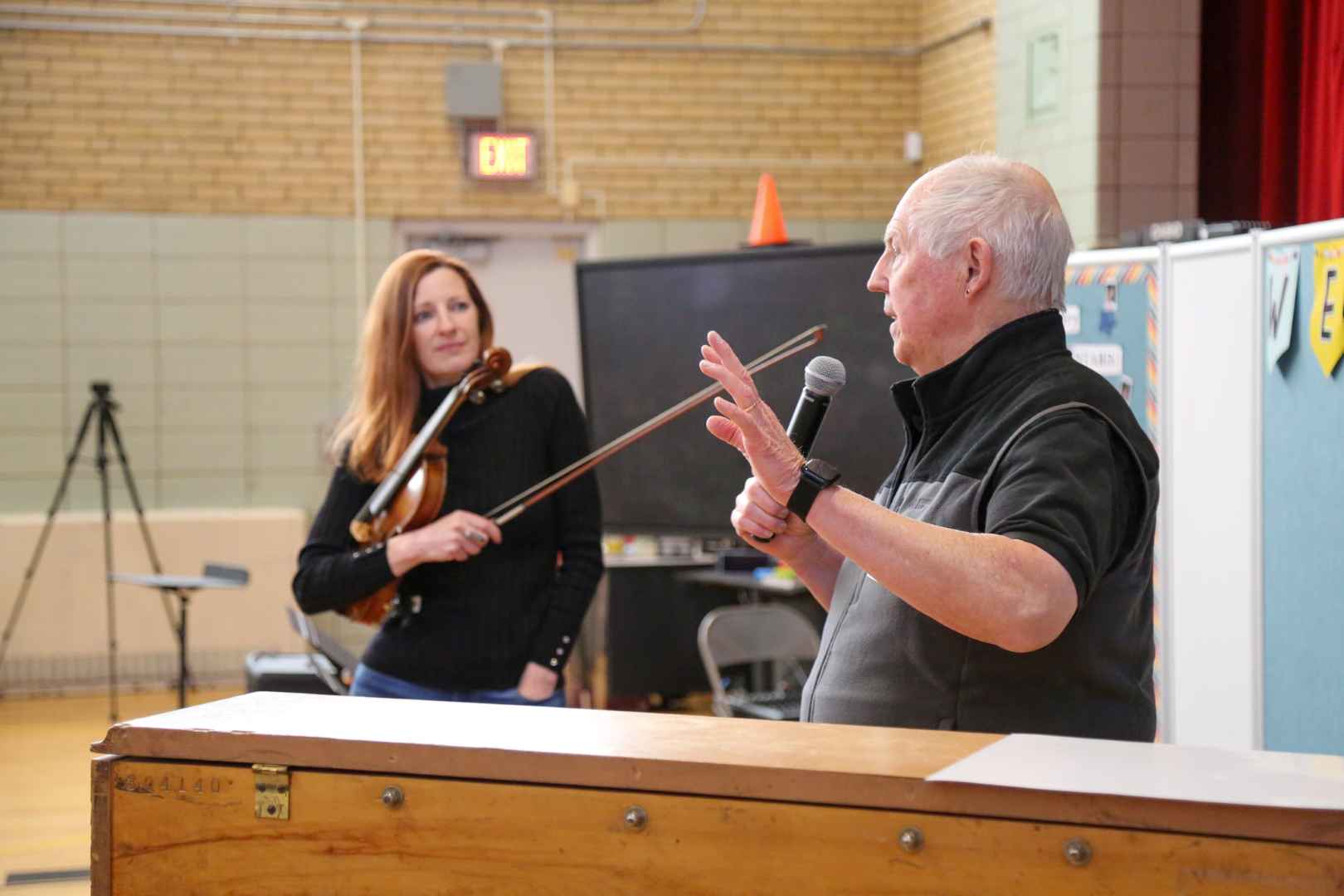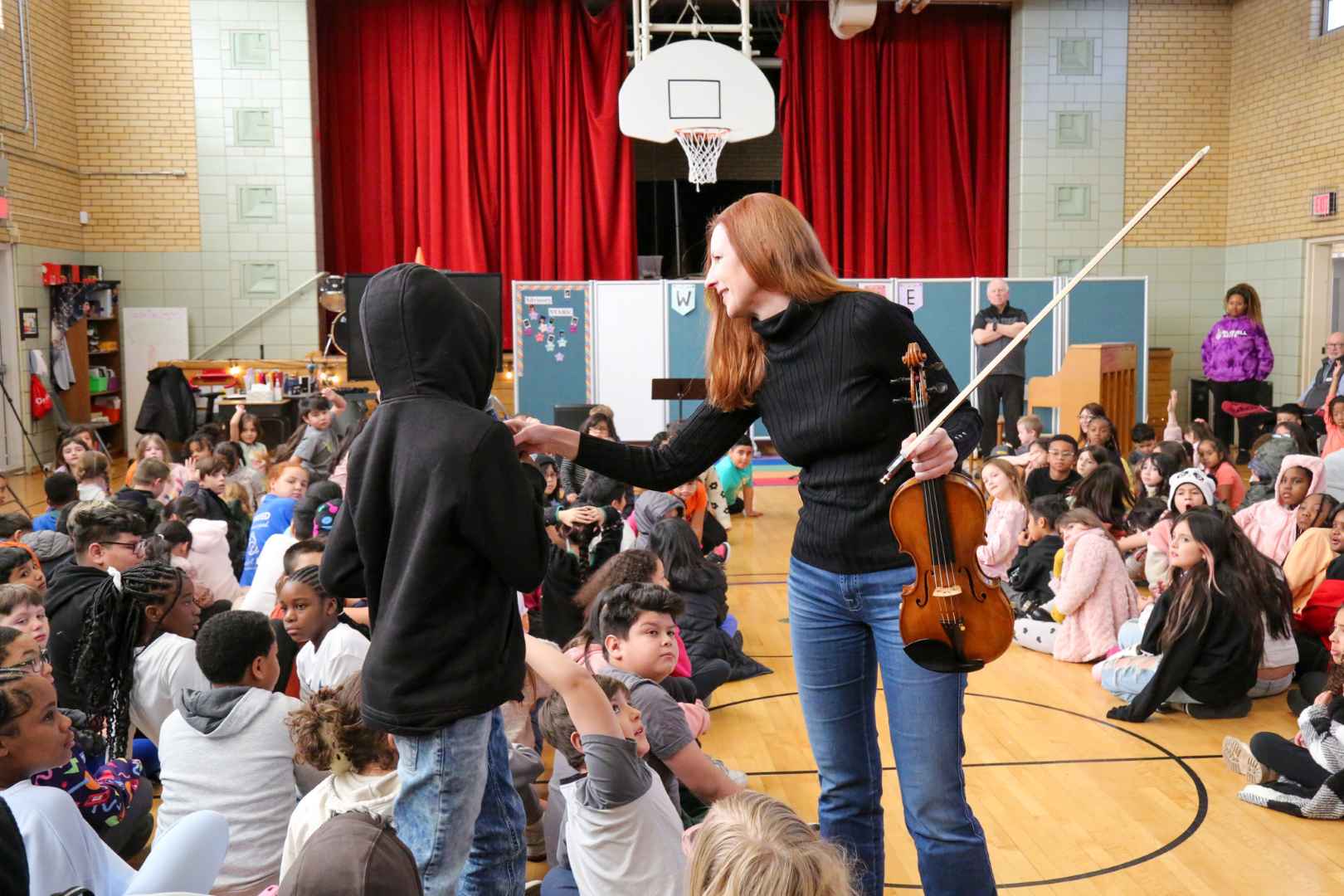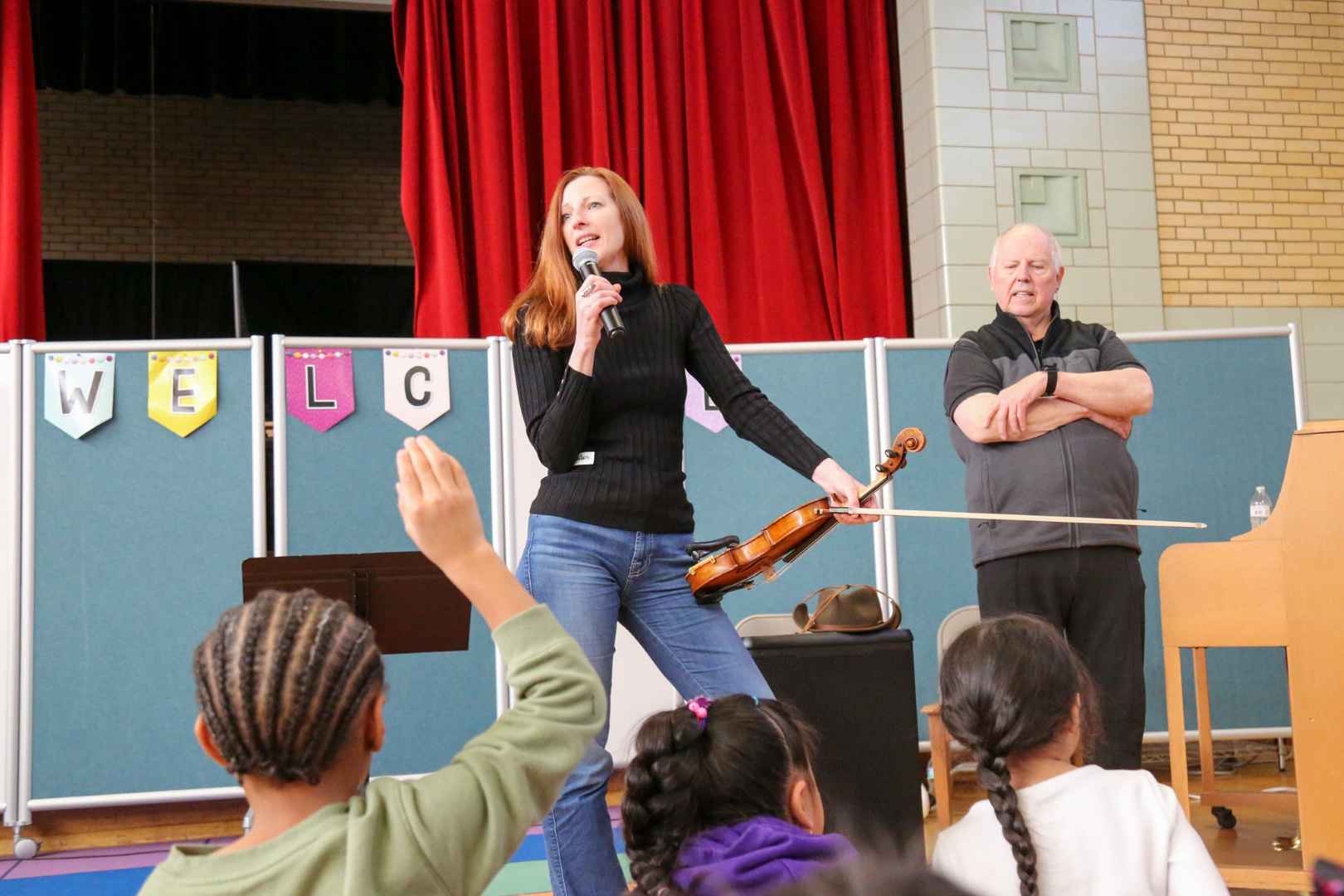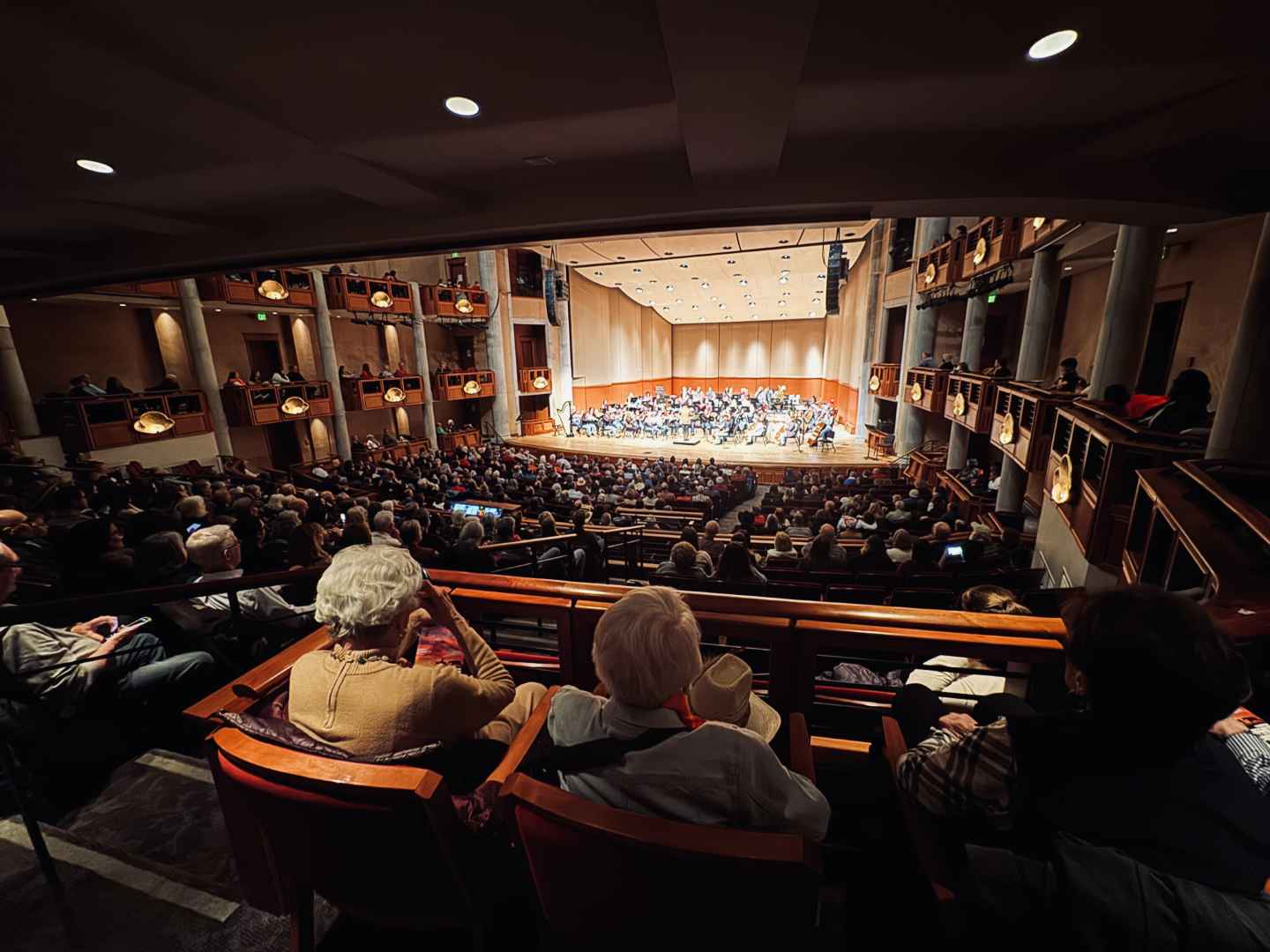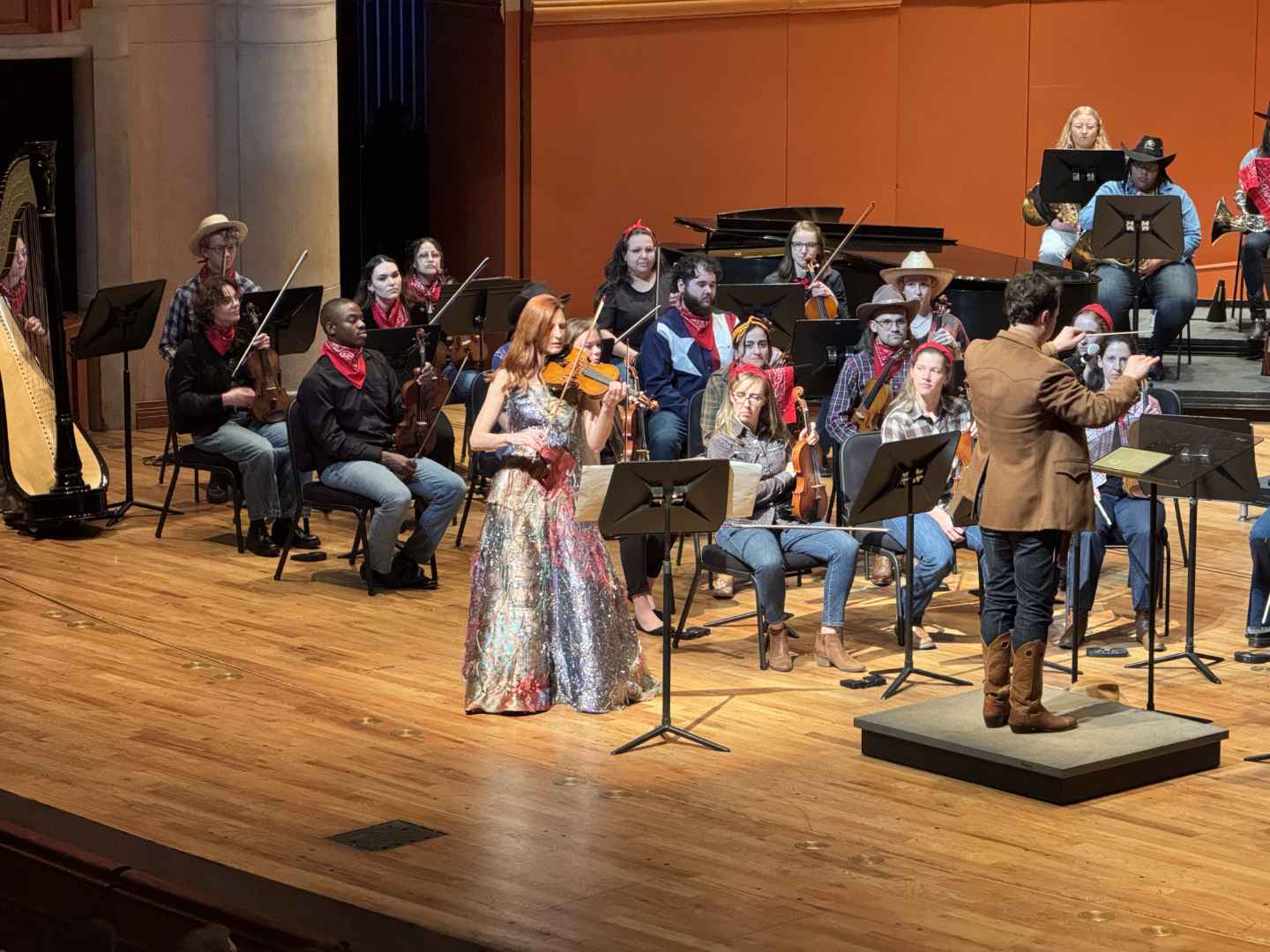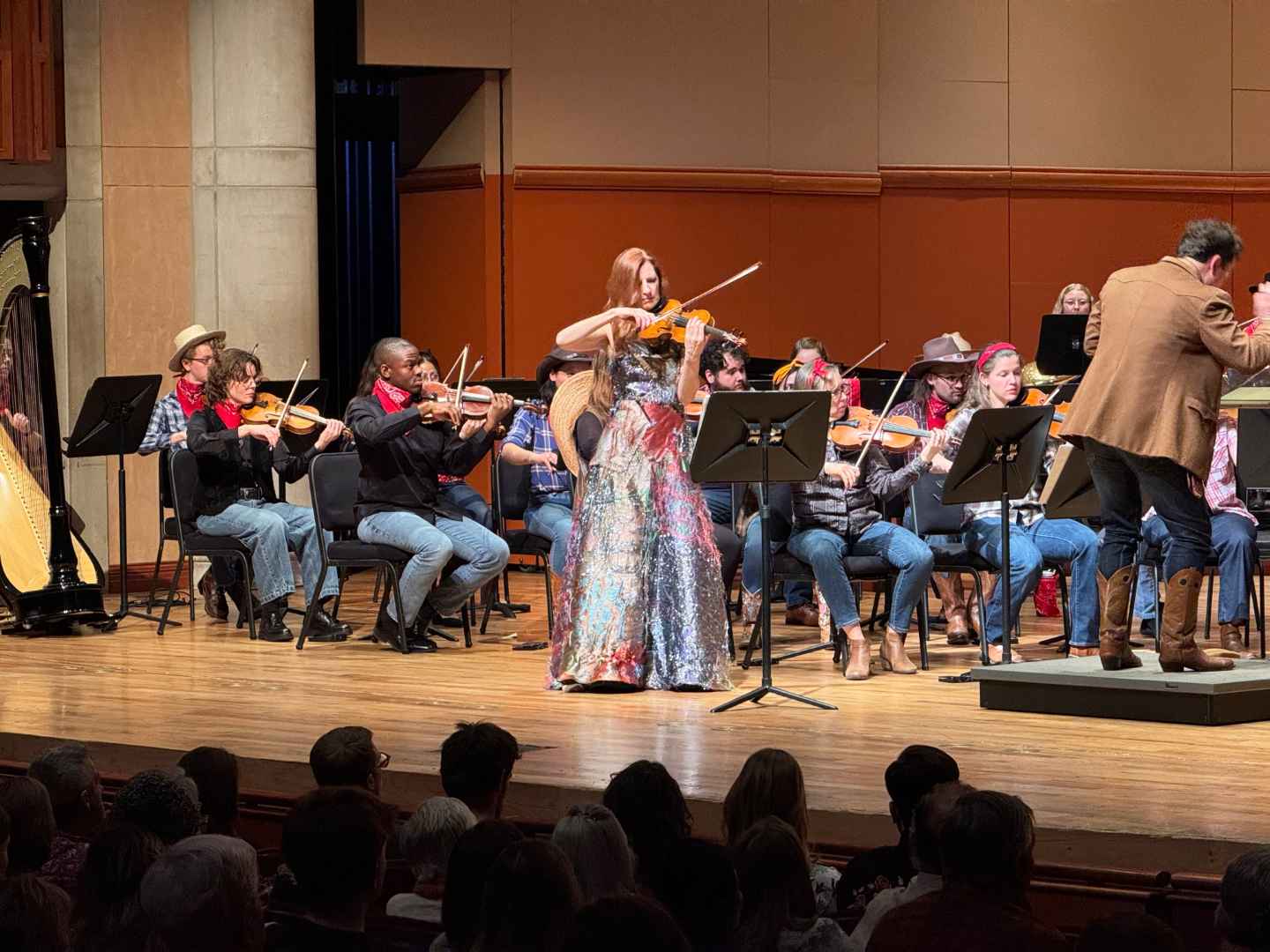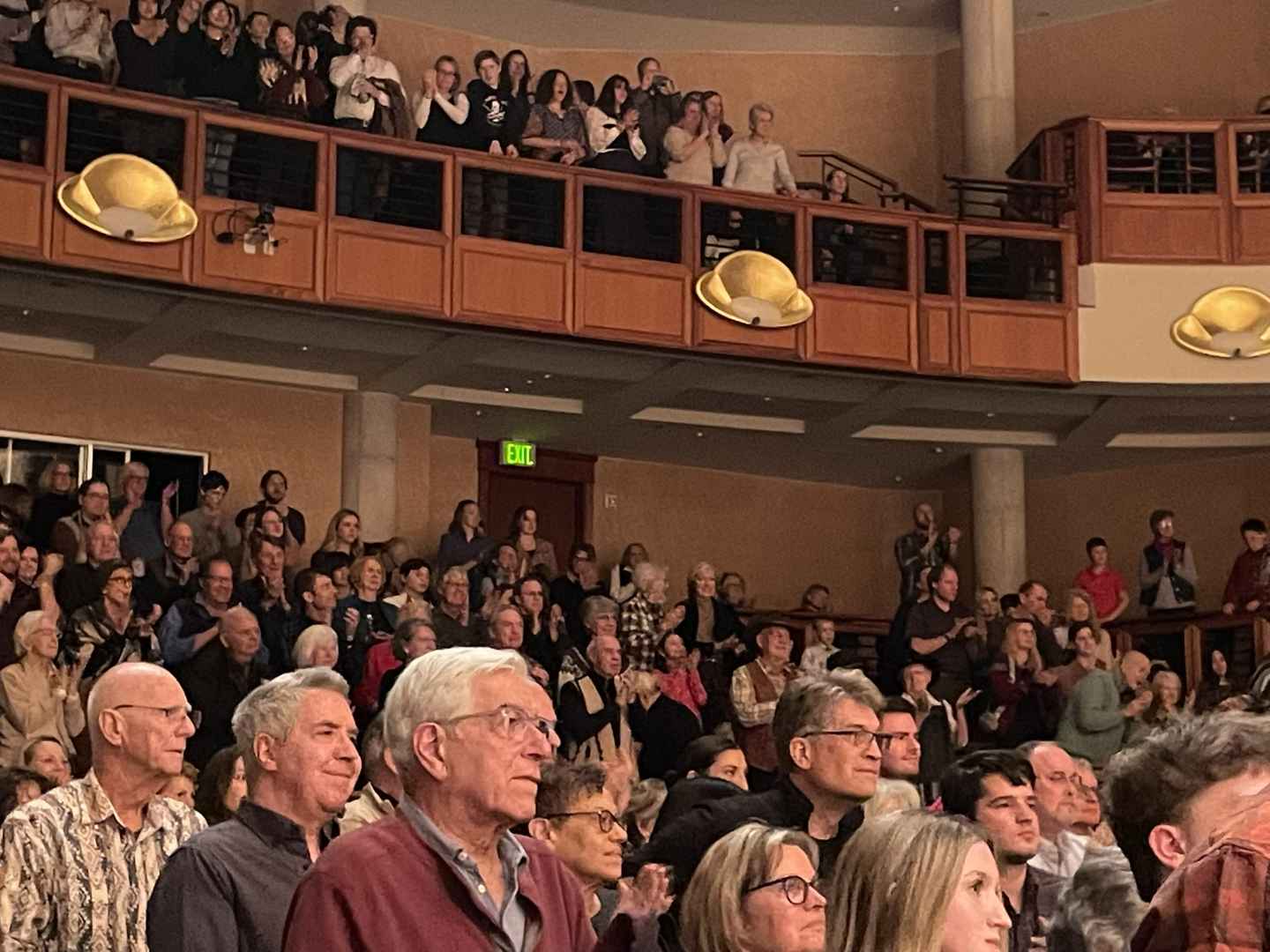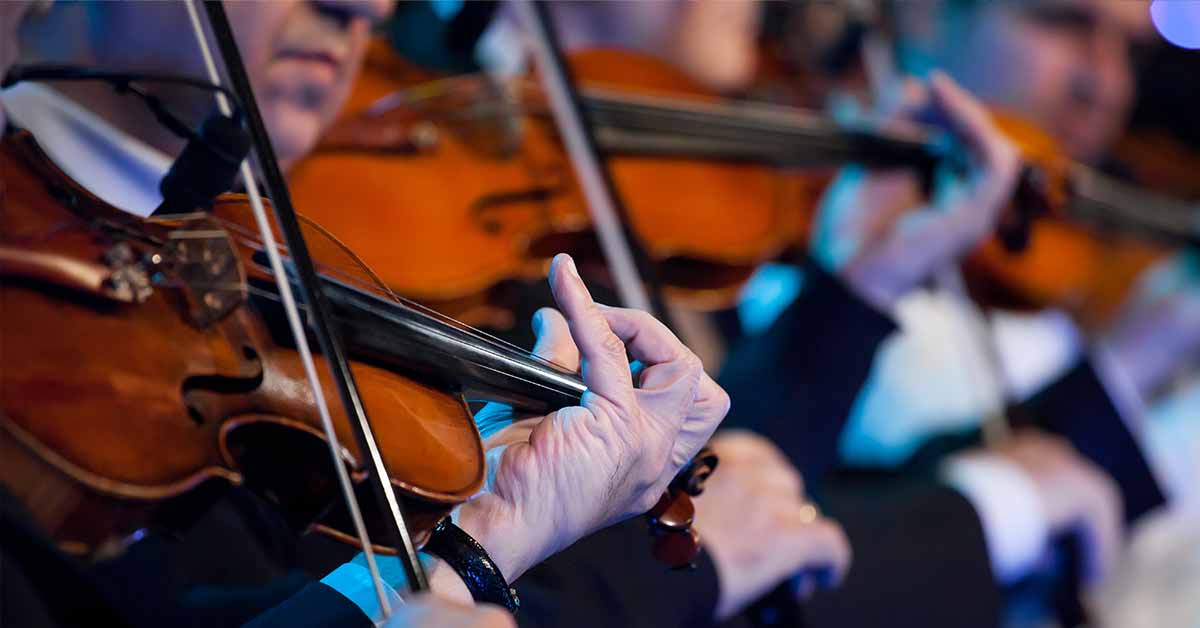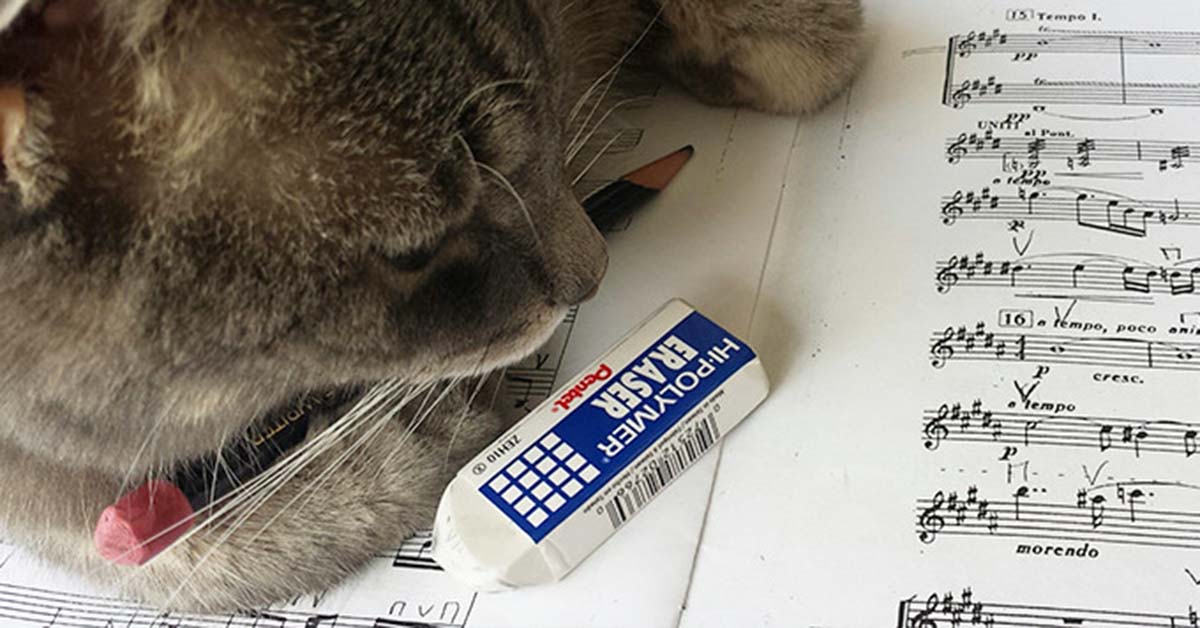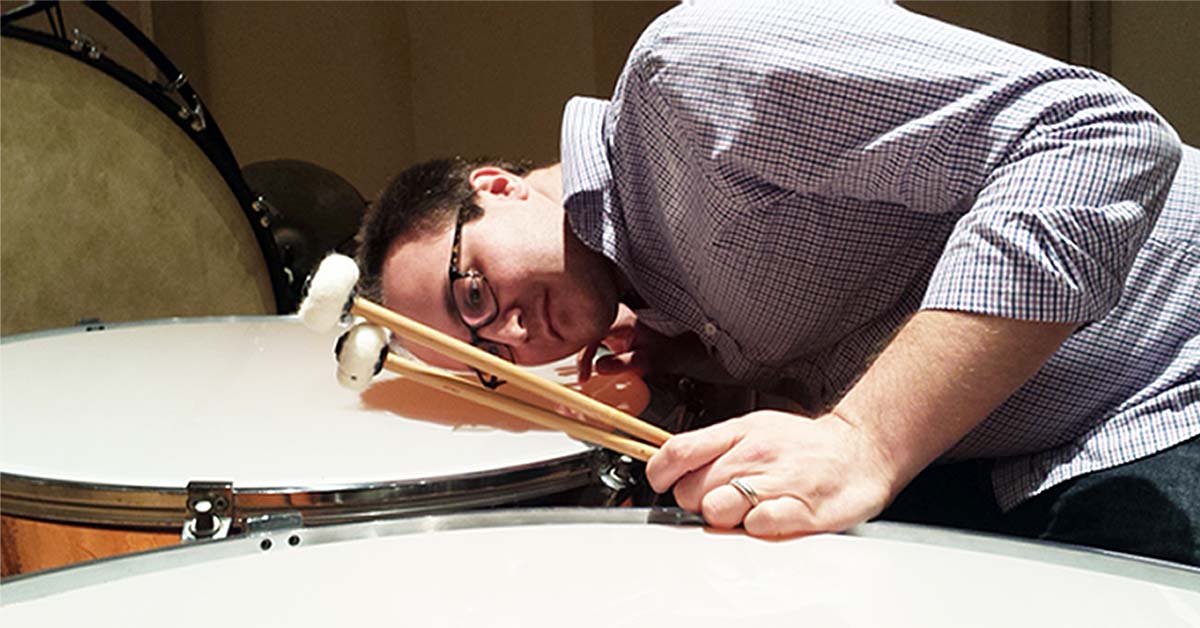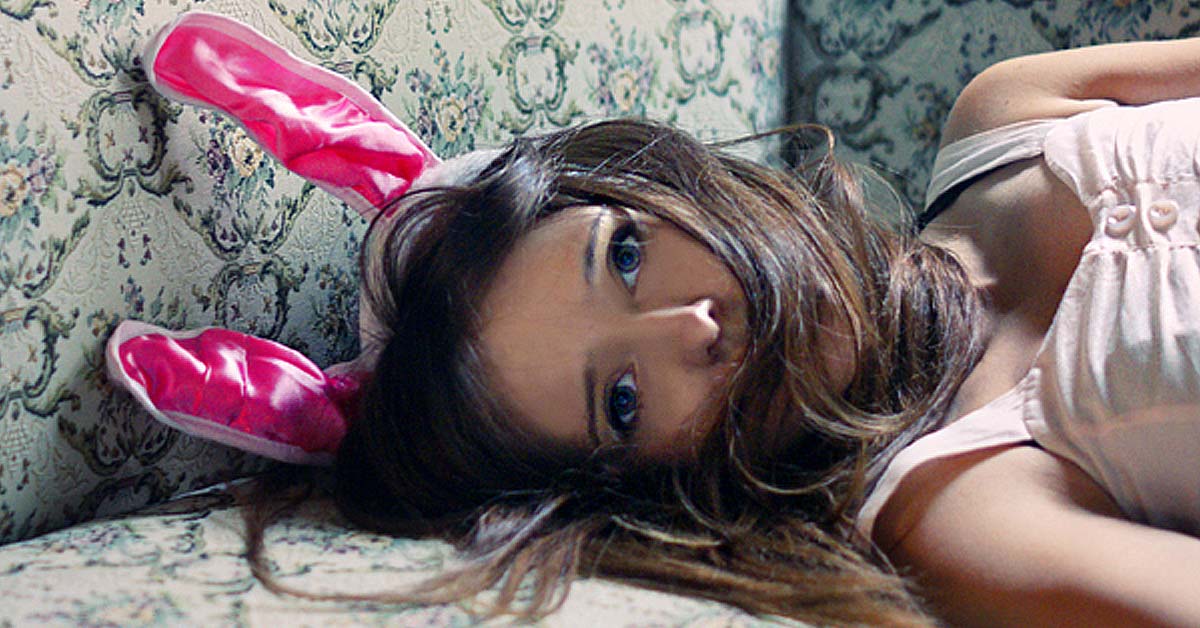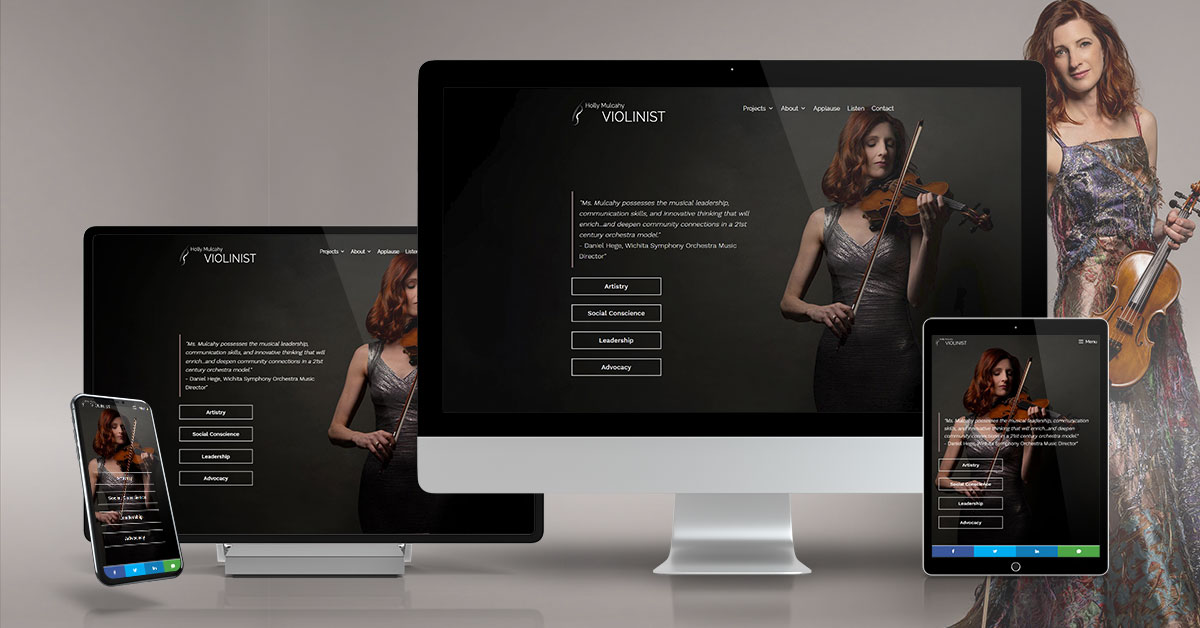During our time in Denver performing The Rose of Sonora with Symphony of the Rockies, composer George S. Clinton and I had the privilege of visiting The Charles Burrell Visual & Performing Arts Campus, part of Aurora Public Schools.
For me, this visit was especially meaningful. I am a product of Aurora Public Schools, and I know firsthand the impact of music education. It is heartbreaking to see so many arts programs cut from public schools in the last decade. That is why the Charles Burrell campus is such an important oasis, giving students a rare and vital space to create, express, and explore their artistic potential.
From the Classroom to the Concert Hall
When we met with the students, we talked about how music sparks emotions, fuels creativity, and tells powerful stories. Instead of explaining the plot of The Rose of Sonora, we played sections of the music and asked them what story they imagined.
Spoiler alert! Their stories were strikingly similar to the one George had written. They picked up on the tension, triumph, and adventure woven into the music, proving just how universal storytelling through sound can be.
What made this visit even more special was seeing these students not just in the classroom, but also in the concert hall. Many of them, along with their teachers and principal, attended the Symphony of the Rockies concert to experience The Rose of Sonora live. Watching them fully engaged in the performance reinforced exactly why arts education matters.
Why Music Education Matters
Music education goes beyond learning notes and rhythms. It builds emotional intelligence, creativity, and discipline. It gives students a sense of belonging, a way to express themselves, and a connection to history and culture. It also enhances critical thinking, teamwork, and problem-solving, skills that serve them for life.
Most importantly, music connects us. It reflects our emotions, tells our stories, and helps us understand the world around us. When students engage with live performances, they do not just hear music, they feel its impact. They witness the craftsmanship, the collaboration, and the unspoken communication among musicians. By experiencing it with friends, family, teachers, and even their principal, they create a shared moment they can reflect on together. This kind of communal engagement deepens their connection to the music, making it more than just a performance. It becomes a lasting memory, a conversation, and a source of inspiration that stays with them long after the concert ends.
The Value of Involving Students
In a world increasingly focused on screens and quick information, it is more important than ever to show students how the arts impact them and society. When young people engage with professional musicians, share their ideas, and experience live performances, they see that music is not just entertainment. It is a vital part of life. It gives voice to emotions, bridges cultural divides, and fosters empathy. It reminds them that creativity is not something separate from daily life, but rather woven into the fabric of who we are.
By inviting students to imagine, participate, and connect, we empower them to see the arts as something they can belong to. These experiences do not just inspire the next generation of musicians. They create lifelong supporters and advocates of the arts.
What Music Education Gave Me
Music education changed my life. It gave me a voice, a way to express myself, and a community where I felt I belonged. That kind of support made all the difference for me, and I see that same spark in the students at The Charles Burrell campus.
They are fortunate to have this space, but we must continue advocating for all students to have access to these opportunities. The arts shape lives, open doors, and connect us in ways few other subjects can.
A huge thanks to Barbara and Tom Humphrey, my high school orchestra teachers, for not only helping connect all the dots for this trip, but also for their years of dedication to music education. Their impact extends far beyond the classroom, and I am grateful for the role they played in my journey. Seeing them continue to foster connections between students and professional musicians is a reminder of just how powerful great teachers can be.
Finally, a heartfelt thank you to Symphony of the Rockies for their commitment to building these bridges. Their innovative and intentional approach to engaging students ensures that the next generation sees music not as a distant art form, but as something they can be a part of, experience deeply, and carry with them for life.
